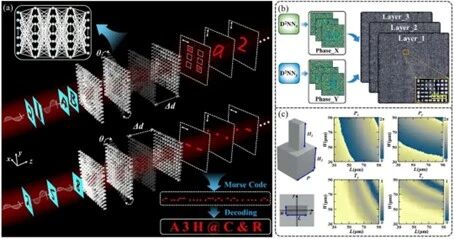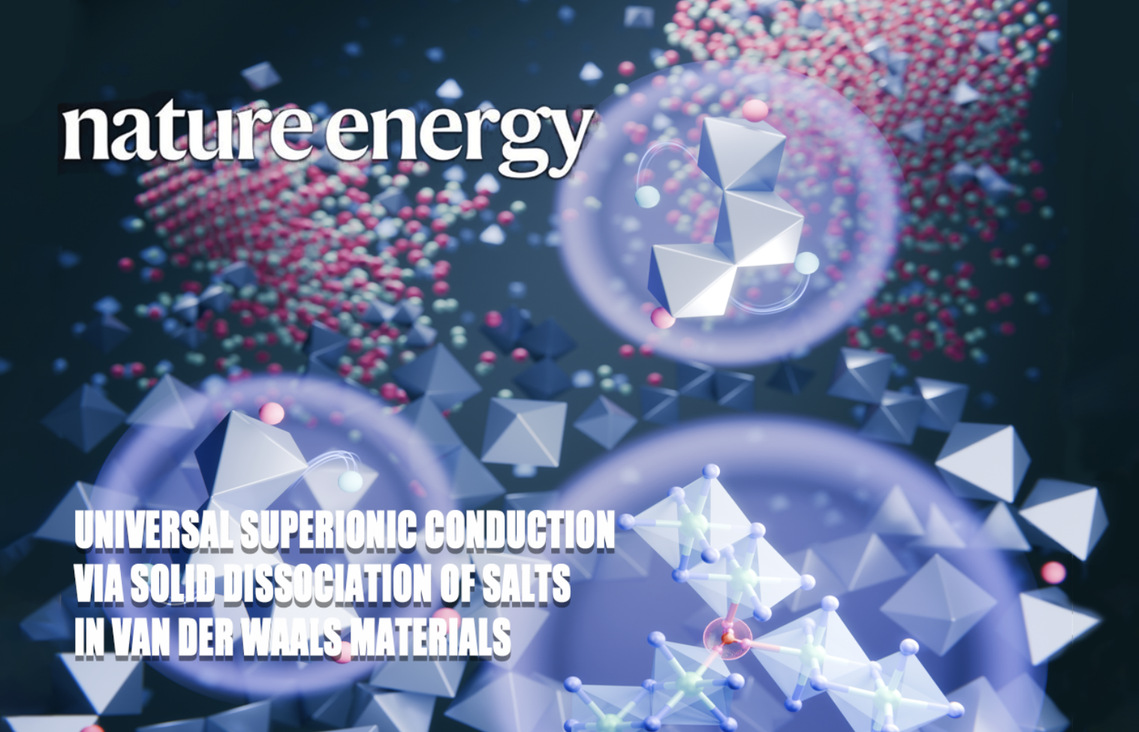Recently, the research team led by Associate Professor Fei Ding from the School of Electronic Science and Technology, College of Information Science and Technology, has achieved a series of breakthroughs in the fields of polarization-selective diffractive neural networks and multi-degree-of-freedom multiplexed diffractive neural networks based on metasurfaces. The results have been published in Nature Communications and Advanced Materials, and were prominently featured on the official website of the National Natural Science Foundation of China (NSFC).
All-Optical Information Processing: Balancing the "Spear" and "Shield"
With the rapid development of information technology, the demand for bandwidth and information processing capacity in communication networks continues to surge. All-optical information processing, leveraging its advantages of high efficiency, broad bandwidth, and parallel processing, is gradually emerging as an ideal solution. However, information security and information sharing, as two core yet often opposing requirements, urgently need synergistic optimization. This very contradiction (between security and sharing) drives researchers to explore novel all-optical information processing frameworks capable of both information encryption and controlled data sharing. All-optical diffractive neural networks (DNNs), which process massive information in parallel at the speed of light, have opened new pathways for all-optical computing.
Currently, this approach has demonstrated potential in various areas, including image classification, logical operations, image processing, and multi-task processing, such as multi-wavelength complex-field imaging, multispectral all-optical information processing, and multi-target/multi-task handling. Notably, the propagation direction of light can serve as a degree of freedom for constructing unidirectional DNNs. Recent studies have proposed DNNs for unidirectional diffraction-based imaging, enabling polarization-independent imaging in the forward direction while blocking reverse imaging. Additionally, pyramid-structured DNNs have been developed to achieve directional image magnification and minification. However, existing DNNs are limited by their single degree of freedom for modulation, making it challenging to realize polarization selectivity and switchable directional functionality, thus restricting their application in secure communications and dynamic data sharing. Metasurfaces, with their unparalleled capability to manipulate the amplitude, phase, and polarization of electromagnetic waves, offer new opportunities to enhance the functionality and applications of DNNs.
Polarization-Selective Diffractive Neural Networks: Bestowing "Wings of Light" upon Sharing and Encryption
In a significant breakthrough, Associate Professor Fei Ding, in collaboration with Professor Xiaofei Zang, Professor Yiming Zhu, and Academician Songlin Zhuang from the University of Shanghai for Science and Technology, has made important progress in polarization-selective diffractive neural networks. The team innovatively proposed and experimentally validated a Polarization-Selective Diffractive Neural Network (PS-DNN). This design integrates quarter-waveplate/half-waveplate meta-atom arrays with metallic gratings to form a compact, polarization-dependent DNN architecture, providing a solution to the challenge of balancing data sharing with encryption. Compared to traditional metasurfaces, the PS-DNN, optimized via deep learning, offers advantages including high-capacity processing, adaptive functionality, and polarization-based encryption. Although the demonstrated PS-DNN operates in the terahertz regime, the underlying research and applications can be extended to infrared and visible wavelengths through optimized design of the metasurface unit cells.

Figure 1. Unidirectional/Bidirectional Diffractive Neural Networks based on Polarization Selection.
This research will provide solutions for all-optical computing, secure communication, and privacy protection. The findings were published in Nature Communications on May 14th, under the title Polarization-selective unidirectional and bidirectional diffractive neural networks for information security and sharing. Ziqing Guo (PhD candidate) and Dr. Zhiyu Tan from the University of Shanghai for Science and Technology are co-first authors. Professors Xiaofei Zang, Yiming Zhu, and Fei Ding are the corresponding authors. Academician Songlin Zhuang provided invaluable guidance for this work.
The research achievements of Associate Professor Fei Ding's team have not only generated significant interest within the international academic community but were also specifically highlighted on the NSFC official website. This project demonstrates high functional integration and strong generalization capabilities, showcasing the continuous innovation capability of Chinese research teams in the interdisciplinary field of intelligent photonics and artificial intelligence. It holds promise for providing new solutions for privacy protection and information security in areas such as target detection and image recognition.
Link:https://www.nature.com/articles/s41467-025-59763-6.pdf
Multi-Degree-of-Freedom Diffractive Neural Networks: Opening New Paths for Multifunctional Integration and Communication
In another collaborative study, the team of Associate Professor Fei Ding, together with the team of Academician Songlin Zhuang, Professor Yiming Zhu, and Associate Professor Xiaofei Zang from the University of Shanghai for Science and Technology, proposed and experimentally demonstrated a Multi-Degree-of-Freedom Diffractive Processor. This processor utilizes a metasurface-based approach to integrate polarization, distance, and rotation channels for various inference tasks and information encryption. The method was validated using a three-layer metasurface, achieving high task capacity, including single/double digit and single/double fashion product classification, logical operations, and image transformation. Furthermore, by mapping extensive input data onto the multi-degree-of-freedom channels and utilizing this DNN framework to encode information into Morse code, the team experimentally realized a highly secure information transmission system. The integration of polarization, distance, and rotation channels into an all-optical diffractive processor with multifunctional capabilities paves the way for multifunctional integrated devices and communications.

Figure 2. Schematic diagram of the Multi-Degree-of-Freedom Multiplexed Diffractive Neural Network and its design method.
These research findings were published in Advanced Materials on June 12th under the title Integrated Polarization, Distance, and Rotation for Multi-DoF Diffractive Processor and Information Encryption.












